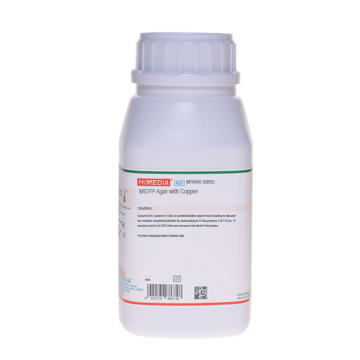 Your enquiry has been submitted
Your enquiry has been submitted
Universal Beer Agar, Modified
Universal Beer Agar (UB Agar), Modified is recommended for culturing microorganisms of significance in the brewery industry.
Composition**
| Ingredients | Gms / Litre |
|---|---|
| Peptonized milk | 15.000 |
| Yeast extract | 10.000 |
| Glucose | 10.000 |
| Tomato juice (solids) | 7.000 |
| Dipotassium phosphate | 0.500 |
| Monopotassium phosphate | 0.500 |
| Magnesium sulphate | 0.010 |
| Sodium chloride | 0.010 |
| Ferrous sulphate | 0.010 |
| Manganese sulphate | 0.010 |
| Agar | 12.000 |
Final pH ( at 25°C): 6.3±0.2
**Formula adjusted, standardized to suit performance parameters
Directions
Suspend 55.04 grams in 750 ml of distilled water. Heat to boiling to dissolve the medium completely. Add 250 ml beer, without degassing, to the hot medium and mix gently. Dispense as desired and sterilize by autoclaving at 15 lbs pressure (121°C) for 10 minutes.
Principle And Interpretation
Kozulis and Page (1) developed Universal Beer Agar Modified, to which beer is added for detecting microbial contamination, has conditions found in typical brewery products and thus helps in growth of most variants of lactic acid bacteria.
Universal Beer Agar, Modified supports the growth of Lactobacilli, Pediococci, Acetobacter, Lymomonas species and wild yeast strains which may be found infecting the pitching yeast, the cooled wort or during fermentation or storage of the finished beer. Due to the presence of beer in these media, it is selective for growth of microorganisms that have adapted themselves to the existent conditions in the brewery. The presence of hop constituents and alcohol inhibits growth of many airborne microorganisms not adapted to this environment (2).
Yeast extract is a source of trace elements, vitamins and amino acids. Peptonized milk contains lactose as an energy source. Tomato juice is a source of carbon, protein and nutrients. Dextrose provides additional carbon. Dipotassium and monopotassium phosphates provide buffering capability. Magnesium sulphate, ferrous sulphate and manganese sulphate are sources of ions that simulate metabolism. Sodium chloride maintains the osmotic equilibrium. The presence of spoilage microorganisms in pitching yeast may be detected from diluted samples by direct surface plating or by pour plate techniques. Incubate the plates aerobically and anaerobically.
Quality Control
Appearance: Cream to yellow homogeneous free flowing powder
Gelling: Firm, comparable with 1.2% Agar gel.
Colour and Clarity of prepared medium: Medium amber coloured clear to slightly opalescent gel forms in Petri plates
Reaction: Reaction of 5.5% w/v aqueous solution at 25°C. pH : 6.3±0.2
pH: 6.10-6.50
Cultural Response
M1483: Cultural characteristics observed after an incubation at 35-37°C for 24-48 hours.
| Organism | Inoculum (CFU) | Growth | Recovery |
|---|---|---|---|
| Acinetobacter baumannii ATCC 19606 | 50-100 | good-luxuriant | >=50% |
| Lactobacillus acidophilus ATCC 4356 | 50-100 | good-luxuriant | >=50% |
| Lactobacillus fermentum ATCC 9338 | 50-100 | good-luxuriant | >=50% |
| Proteus vulgaris ATCC 13315 | 50-100 | fair-good | 30-40% |
Storage and Shelf Life
Store below 30°C in tightly closed container and the prepared medium at 2-8°C. Use before expiry date on the label.
Reference
- Kozulis J.A. and Page H.E., 1968, Proc. Am. Soc. Brew. Chem., 52:58.
- MacFaddin J. F., 1985, Media for Isolation-Cultivation-Identification-Maintenance of Medical Bacteria, Vol. 1, Williams and Wilkins, Baltimore.
| Product Name | Universal Beer Agar, Modified |
|---|---|
| SKU | M1483 |
| Product Type | Regular |
| Physical Form | Powder |
| Origin | Animal |
| Packaging type | HDPE |
| References | 1. Kozulis J.A. and Page H.E., 1968, Proc. Am. Soc. Brew. Chem., 52:58. |
| Customized Product Available | No |









